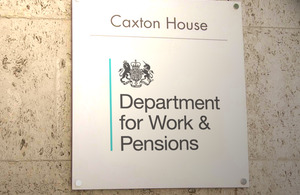How do you talk about the problems you are facing in making policy without running the risk that what you say will be used against you?
This can be the first concern mentioned by colleagues when I mention Open Policy Making. They worry that if we admit to someone outside the civil service (e.g. a campaigner, an academic) that we are having trouble solving a policy problem, or that there are real constraints on what policy we can make, then this information might be used publicly to argue that we don’t know what we are doing or that policy ideas are flawed. This worry can make us cautious about what we say and sometimes reluctant to say why it’s challenging to solve a particular policy problem.
I understand this. Once you let go of information, you stop having control over it, including control over how it is presented. Good policy making may not be helped if something is said publicly without context, caveats and checking. There’s also a risk that people may be alarmed if they think ideas that are being chewed over and might not be final policy, are actually what we are going to do. Yet, how can you make good policy if you can’t discuss the difficulties you face with the outside experts who might know how to get past those difficulties? Challenge Lab was my attempt to solve this problem by having a different sort of conversation between experts and civil servants.
The Caxton House Rule
One way in which Challenge Lab was different to our usual meetings was that we didn’t start by saying “this is what we are thinking of doing, what do you think?” Instead, we said “this is a challenging policy problem we have and this is why it’s challenging, how do you think we can solve it?” By talking about challenges rather than options, I wanted to encourage people to focus on thinking about solutions rather than problems with what was being suggested.
The other thing we did differently was to be more open about the evidence we were using, limits on what we could do, and why some possible solutions were difficult. My hope was that this would help people make more practical suggestions. To help us do this, I came up with the Caxton House Rule and asked everyone to agree to it:
When a meeting, or part thereof, is held under the Caxton House Rule, participants are encouraged to share the insights and information they have learned in the meeting inside their organisations, but neither the identity nor the affiliation of the speaker(s), nor that of any other participant, may be revealed. Participants must also respect the confidences of others by ensuring that insights and information learned in that meeting are not communicated to those external to their organisations.
The idea was that I wanted people to be open in the Challenge Lab and, after the meeting, to do work on solutions with colleagues who couldn’t go. However, I also wanted to set clear rules on who confidential information could be shared with. I admit it’s basically the Chatham House Rule... with more rules. Calling it the Caxton House Rule was also done tongue-in-cheek (Caxton House is the HQ of the Department for Work and Pensions).
The last thing we did differently was to invite both experts we met regularly and experts we had never met. The idea was to mix people who knew the subject with people who were experts in making policy and might bring a new perspective. The Open Policy Making Team was helpful in helping me find these policymaking experts.
What we learnt
The Challenge Lab went well, but not perfectly. The discussions were honest, open and practical. There was a lot of challenging of assumptions and digging into why solutions were being suggested. This was all really useful and I think that having a mix of experts made it happen.
The feedback was that people found it interesting as well as easy to understand the issues and contribute. However, I worry that a small number of people who weren’t familiar with the subject might have felt that couldn’t join in. In future, I’ll think carefully about exactly what we are expecting each person to contribute and send a background briefing in advance. I’ll also make sure that the people are appropriate to the issues under discussion. I’d not invited some people I knew had an interest in our work because I didn’t want the meeting to be too big, but one bit of feedback was that it would have been useful to involve particular people.
People were mostly positive about the Caxton House Rule. However, one comment was that the information wasn’t sensitive enough to justify using it. That might just be a difference of opinion between civil servants and campaigners, but it’s something I’d need to consider when doing another session. The Caxton House Rule might need some work as it’s a bit complex. I had to provide explanations to cover different situations, e.g. to say that it’s alright to say something externally that was mentioned in the meeting if it’s already public or the person who said it has told you that you can.
Coming next
The test of Challenge Lab was whether it will help us solve policy challenges. Challenge Lab did give us some inspired ideas and we now have to think if we could put them into practice.
Challenge Lab gave us a way of openly discussing the difficulties of resolving policy issues with experts outside the civil service. It went so well that we are thinking of doing another one, just as soon as we can find more policy challenges to solve.

Leave a comment